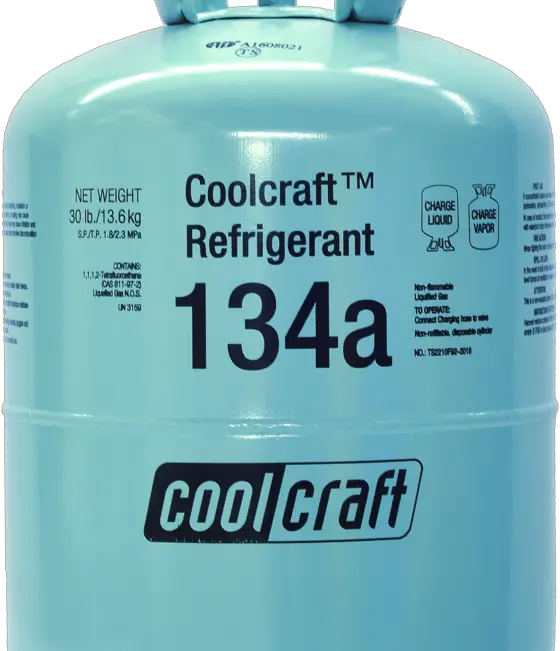How to identify refrigerant? It’s a question you’ve likely never thought of, right? But if you’ve got an AC or fridge at home, it’s a question you need an answer to. Ready to get schooled on this cool topic? Stick around!

Table of Contents
Why is Identifying Refrigerants Important?
Imagine putting diesel in a petrol car. Sounds crazy, right? The same applies to cooling systems. Each system is designed for a specific type of refrigerant. Using the wrong one can harm your system or the environment, or worse, put you in danger. So, knowing how to identify refrigerants is pretty important, don’t you think?
The Different Types of Refrigerants
Just like Baskin-Robbins serves up a variety of flavors, there are also different types of refrigerants in use today. We’re going to explore these varieties, from the outdated to the modern, and natural alternatives in use today.
CFCs (Chlorofluorocarbons)
CFCs are like the dinosaurs of refrigerants. They were common once, but now they’re practically extinct. They have high potential for ozone layer depletion. Most countries have phased them out, but some older systems might still use them.
HCFCs (Hydrochlorofluorocarbons)
HCFCs are the less harmful sibling of CFCs. They’re less damaging to the ozone layer, but still pack a hefty punch when it comes to global warming. They’re being phased out slowly, but you can still find them in some systems.
HFCs (Hydrofluorocarbons)
Meet the new kid on the block. HFCs don’t harm the ozone layer, making them a popular choice in modern cooling systems. But don’t break out the champagne just yet – they still have a high global warming potential.
Natural Refrigerants
As the name suggests, these are naturally occurring substances like ammonia, CO2, and hydrocarbons. They have a low environmental impact, but they’re not perfect. Some pose safety risks due to flammability or toxicity.
Check out these other related articles…
Low Refrigerant Charge Symptoms: Your Quick 101 Guide
Causes of Low Refrigerant in AC: Your Comprehensive Guide
Does Refrigerant Stop Leak Work? [Detailed Answer]
Refrigerant Requirements: Your Detailed 411 Guide
How Often Does Refrigerant Need to Be Replaced? [Answered]
How to Identify Refrigerant: The Process
Now that we’ve got our refrigerant basics covered and we know about the different types, let’s dive into the ‘how-to’ of identifying them. We’ll look at the process, from reading labels to using professional identifiers and color codes.
Reading the Manufacturer’s Label
The easiest way to identify a refrigerant? Check the manufacturer’s label on the unit. It’s like the ID card of your cooling system. Can’t find the label? That’s where things get tricky…
Using a Refrigerant Identifier
Think of a refrigerant identifier as a detective in a box. It analyses a sample of refrigerant and tells you what it is. Handy, huh? But remember, this should be done by a professional.
Refrigerant Cylinder Color Codes
Refrigerant cylinders come color-coded. It’s like a secret language that tells you what’s inside. For example, green is for R-22 (an HCFC), while pink is for R-410A (an HFC). But color codes can vary, so always double-check.
Safety Considerations When Identifying Refrigerants
Handling refrigerants isn’t a casual affair. It requires caution, understanding potential risks, and knowing what to do when things are unclear. Let’s look at safety precautions and practices to keep in mind during the identification process.
Hazards of Incorrect Identification
Misidentifying a refrigerant can be as bad as pouring coffee into a teapot. It can damage the system, cause safety hazards, or harm the environment. Not exactly a walk in the park, is it?
Proper Safety Equipment and Practices
When dealing with refrigerants, safety first is not just a motto, it’s a necessity. Protective eyewear, gloves, and proper ventilation are just the start. Always follow safety guidelines to the letter.
Dealing with Unknown Refrigerants
Stumbled upon a refrigerant you can’t identify? Don’t try to play Sherlock. Instead, call in a professional. They’ve got the right skills and equipment to handle it safely.
So there you have it! Now you know why and how to identify refrigerant in your cooling system. Remember, it’s not just about keeping cool – it’s about safety, efficiency, and protecting our planet. Stay cool, folks!